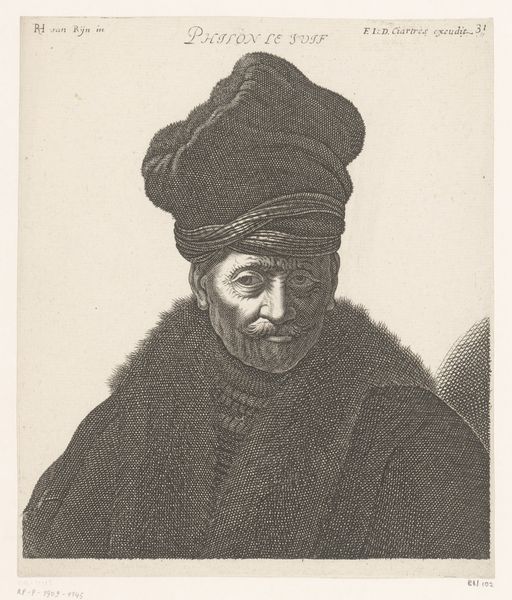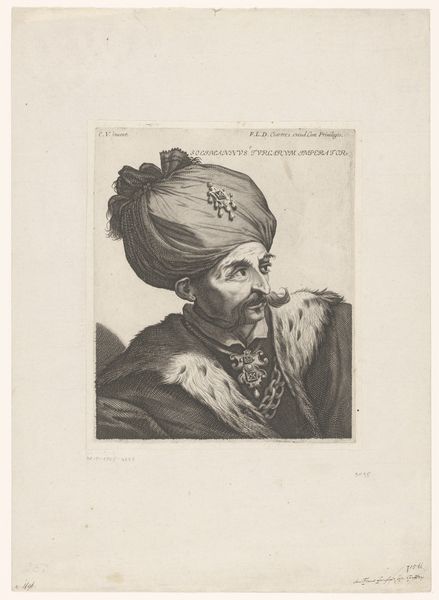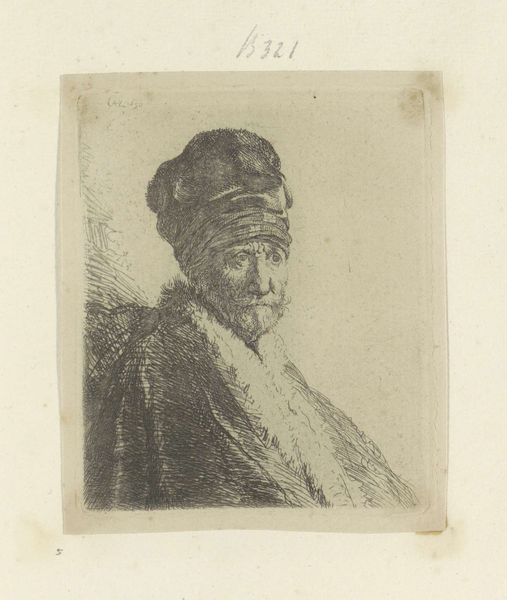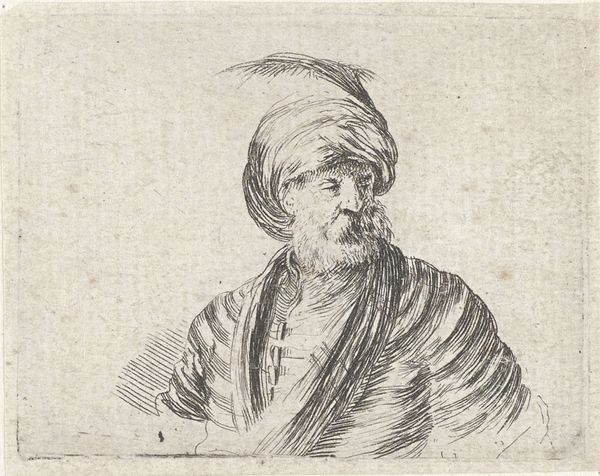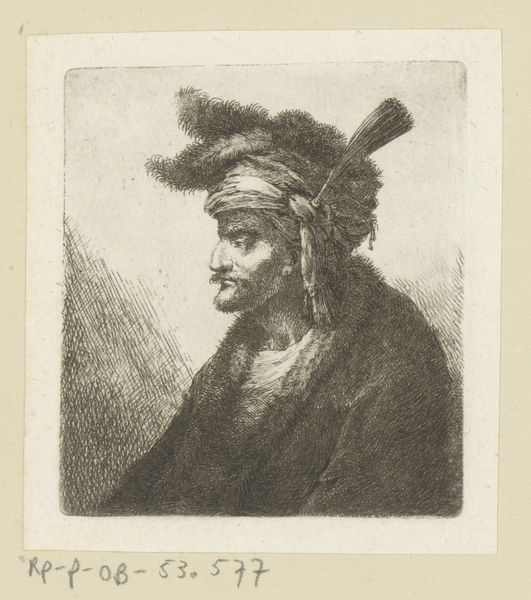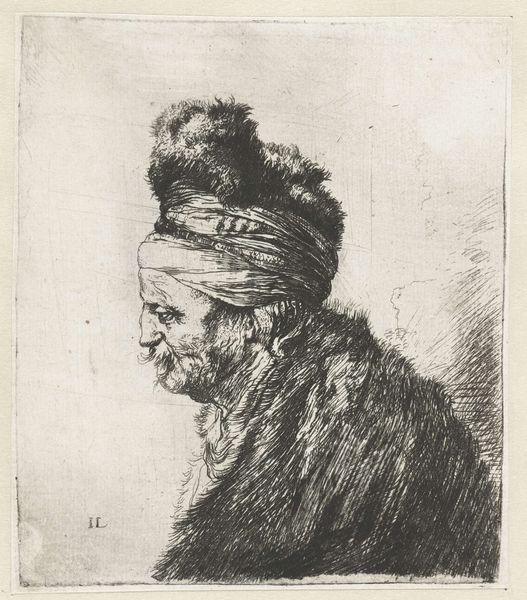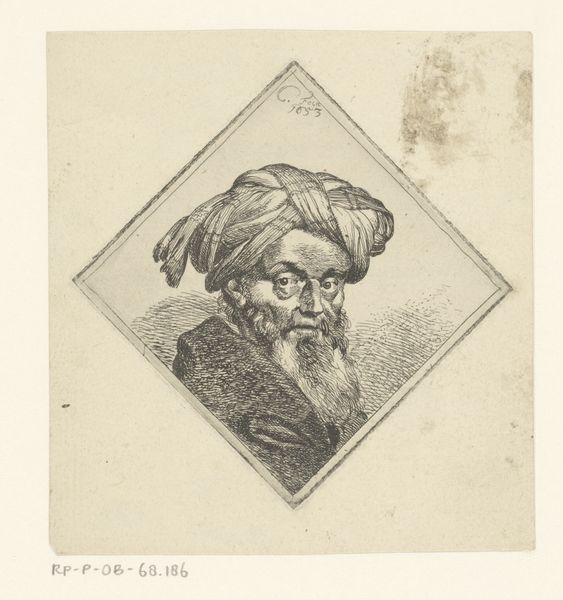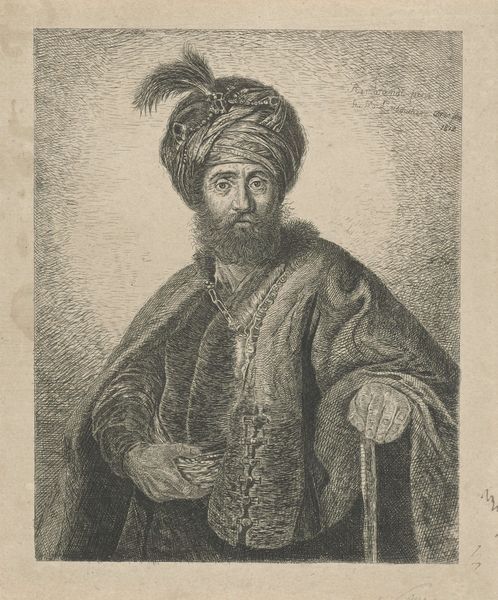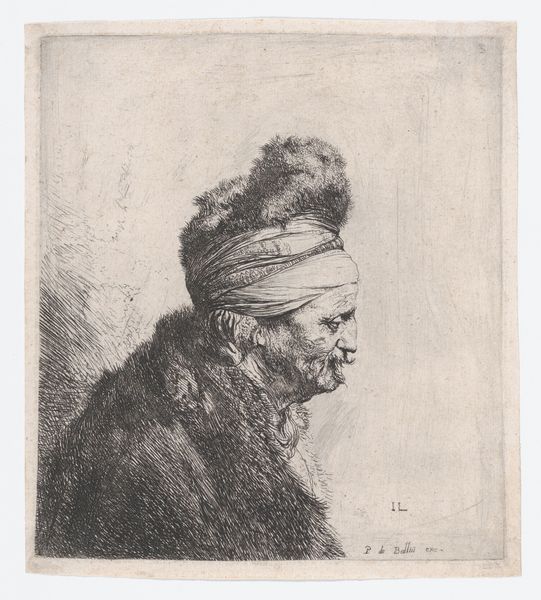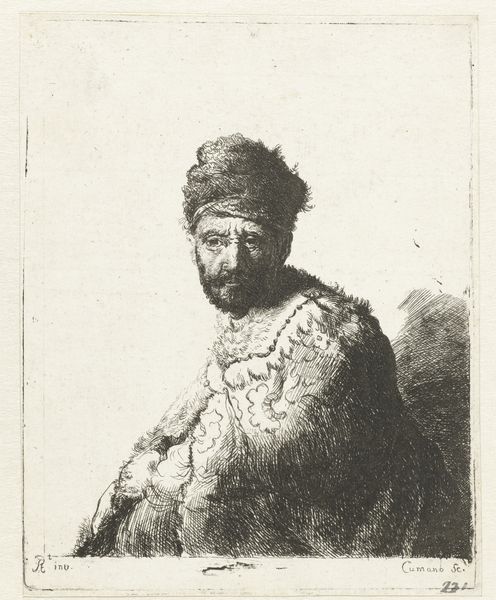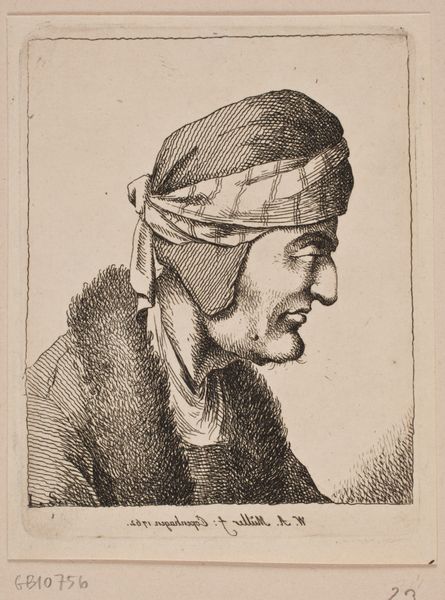
print, etching
#
portrait
# print
#
etching
#
old engraving style
#
islamic-art
#
genre-painting
#
history-painting
Dimensions: height 89 mm, width 68 mm
Copyright: Rijks Museum: Open Domain
Editor: Here we have "Bust of a Man with a Turban," an etching from sometime between 1773 and 1840 by an artist known as Amalie Baader. It’s a striking portrait, with very fine lines creating rich textures, especially in the turban. I'm immediately curious about the choice to depict someone in what seems like Ottoman clothing. What do you make of this representation? Curator: The turban itself is a powerful visual symbol, particularly in European art. It often evoked the ‘Orient’ and everything associated with it—perceived exoticism, wealth, and otherness. We have to ask, what did the turban signify to audiences of this print? Editor: So it’s less a portrait of an individual and more an invocation of a whole culture? Curator: Precisely. It's also crucial to look at how the artist renders the figure's face, particularly the eyes. They have an almost haunting quality that pulls you in. How does the gaze play into the symbolic meaning? Is it confrontational, melancholic, or something else? Consider the Western gaze and the ‘other.’ Editor: I see what you mean. The eyes do seem to challenge the viewer. Maybe it's about questioning preconceived notions or even power dynamics? It does remind me of the Orientalism art movement we discussed last semester. Curator: Indeed, and this work might even predate its formalization, reflecting earlier trends. It asks us to reflect on historical portrayals. And think about the symbolism embedded in seemingly mundane details, like the chain. Does it signify status, or perhaps even captivity? It leaves one to consider deeper implications about representation and perception, don’t you agree? Editor: I absolutely do. The details carry so much historical weight, inviting endless interpretations. Curator: Exactly. We bring our present understanding to the historical context and engage in a continuous and important dialogue with the visual past.
Comments
No comments
Be the first to comment and join the conversation on the ultimate creative platform.
